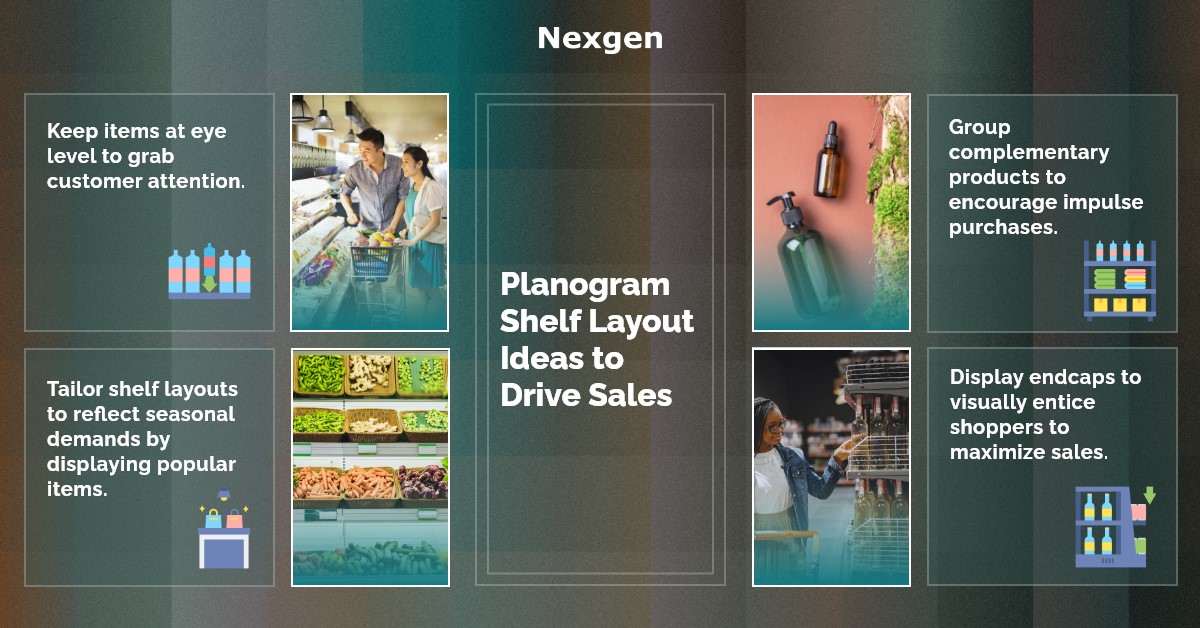Planning the shelf layout of your store is both an art and a science; it requires creativity, psychological insights, and research. Your shelf layout plays a key role in managing store flow and customer traffic. The choice of which one is right for your store will be determined by several factors including your store’s size and location, the products you sell, and most importantly, your target market.
What are your shoppers like? Are they in a hurry to shop, or can they take their time? Do they prefer self-service, or will your store staff show them around? These are just a few of the questions you should consider when choosing a shelf plan. With the help of the right shelf planning tools, such as planograms, you can create layouts that appeal to customers, improve their in-store experience and your overall sales figures.
How can Planograms Help Design Shelf Layouts?
For retail stores, planogram shelf layouts are crucial for optimizing product placement and driving sales. It is essential to understand your target audience and their shopping preferences to create a planogram shelf layout that resonates with them. The placement of products on a shelf can make shoppers more engaged in shopping and increase store revenue. Regularly reviewing and updating your planogram based on sales data, customer feedback, and changing market trends can drive ongoing success. When shelf space successfully influences shoppers, buying behavior can be affected as well. The following are some planogram ideas to help you optimize your shelf layout space:

1. Keep items at eye level
Since lower shelves will have poor lighting and visual blocks, it is best to display high-demand and high-margin products at eye level, which is the prime visual area for shoppers. You can also introduce the latest items to create product awareness and grab the customer’s attention. Humans have the natural tendency to look right or go to the right. Take advantage of this by placing complementary products alongside landmark products. Create popular or landmark product categories on the shelves. Shoppers naturally gaze in a tight “Z” pattern, beginning with the landmark products, therefore, this strategy will entice shoppers to look at more of those products, increasing the likelihood of impulse buying.
2. Cross-merchandise items to drive sales
Group complementary products together to encourage additional purchases. For example, if you are selling pasta sauce, display it next to pasta and grated cheese. This encourages customers to buy multiple items and simplifies their shopping experience. You can also place shampoos, conditioners, and styling products together in the hair care section.
3. Display endcaps to entice shoppers
Endcap display is an integral part of maximizing sales per square foot and ensuring that no display place is wasted. Therefore, utilize end caps, the shelves at the end of aisles, for high-impact displays. These areas attract attention and can showcase new products, promotional items, or seasonal offerings. Make sure to create visually appealing displays that entice customers to explore and make impulse purchases.
4. Place popular items in the back
Keeping essentials toward the back of a store is a great way to drive sales. Most grocery stores use this strategy where staple items such as milk and bread are frequently kept as far away from the entrance as possible. As a result, customers stopping by for the necessities need to walk by other appealing products on the way. This encourages shoppers to browse through other products.
5. Consider seasonality & promotions
Tailor your shelf layout to reflect seasonal demands and trends by highlighting seasonal products or items that are popular. For example, during the summer, display outdoor grilling supplies prominently to encourage shoppers to make purchases. Use shelf tags, signage, or promotional displays to draw attention to special offers, discounts, or limited-time promotions. Clearly communicate the value customers can get by purchasing these items.
Overview of Nexgen POG
Nexgen POG is a robust and user-friendly cloud-based visual merchandising tool. It is designed for quick and efficient planogramming with minimal effort. Planogram in retail can be designed by easily dragging and dropping the products. The multi-device compatibility feature of POG allows you to obtain, share and edit planogram on any device, including your phone. It helps in designing store-specific planograms for increased product visibility and sales.
Get Your Free Trial Now!